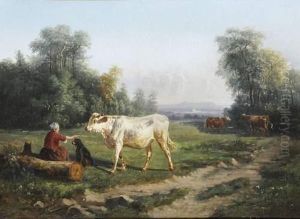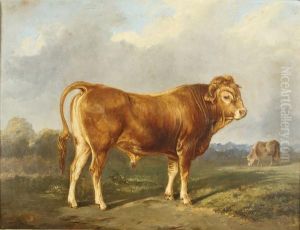Paul Jean P. Gelibert Paintings
Paul Jean P. Gelibert was a French artist known for his landscape paintings and his work within the Barbizon school of painting. Born on January 11, 1834, in Bagnères-de-Bigorre, France, Gelibert developed an interest in art at a young age. The Barbizon school, with which he became associated, was named after the village of Barbizon near the Forest of Fontainebleau, where the artists gathered. This movement was integral to the development of landscape painting in France during the mid-19th century and influenced the later impressionist movement.
Gelibert's work often depicted rural scenes, focusing on the natural beauty of the countryside. He was particularly adept at capturing the changing qualities of light and atmosphere, a characteristic that linked him to the Barbizon school's approach to painting. His landscapes are marked by a sense of tranquility and a deep appreciation for nature. Gelibert's technique involved painting en plein air (outdoors), which allowed him to directly observe and capture the effects of natural light on the landscape.
Throughout his career, Gelibert exhibited his works at the Paris Salon, the official art exhibition of the Académie des Beaux-Arts in Paris. His paintings received recognition and were collected by art enthusiasts of the time. Despite being less well-known than some of his contemporaries, such as Jean-François Millet or Théodore Rousseau, Gelibert's contribution to the Barbizon school and landscape painting has been acknowledged by art historians.
Paul Jean P. Gelibert's life spanned a period of significant change in the art world, with the transition from traditional academic painting to more experimental and impressionistic styles. He remained, however, dedicated to the Barbizon school's ideals throughout his career. Gelibert passed away on May 12, 1916, leaving behind a body of work that continues to be appreciated for its quiet beauty and serene depiction of the French countryside.

